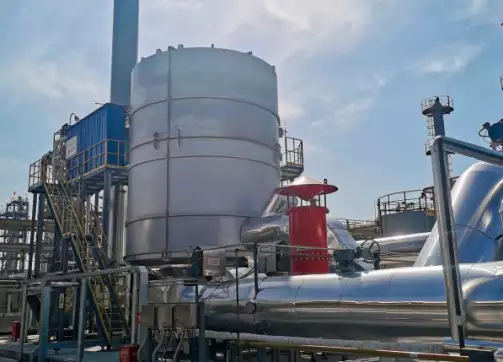RTO for Printing and Energy Efficiency
はじめに
Regenerative Thermal Oxidizers (RTOs) are widely used in the printing industry to ensure energy efficiency and reduce emissions of volatile organic compounds (VOCs). This article will explore the various aspects and perspectives of RTOs for printing, highlighting their benefits and applications.
The Importance of Energy Efficiency in the Printing Industry
– Energy consumption is a significant concern in the printing industry, where large amounts of heat are required for drying processes.
– High energy consumption not only leads to increased operational costs but also contributes to environmental pollution.
– RTOs offer an effective solution by recovering and reusing thermal energy from exhaust gases generated during printing operations.
Working Principle of RTOs
– RTOs work based on the principle of thermal oxidation, where VOCs in the exhaust gases are converted into carbon dioxide and water vapor.
– The process involves two or more ceramic beds filled with heat exchange media, allowing for efficient heat transfer and energy recovery.
– Through a series of valves, the flow of exhaust gases is alternated between the beds, ensuring continuous operation and optimal energy efficiency.
Benefits of RTOs for Printing
– Energy Recovery: RTOs can recover up to 95% of the thermal energy from exhaust gases, significantly reducing energy consumption in printing operations.
– Emission Reduction: By effectively oxidizing VOCs, RTOs help printing facilities comply with environmental regulations and reduce their carbon footprint.
– Cost Savings: The energy savings achieved through RTO implementation can lead to substantial cost reductions in the long run.
– Improved Air Quality: RTOs contribute to cleaner air by eliminating harmful VOC emissions, creating a healthier working environment for printing facility staff.
Application of RTOs in the Printing Industry
– Drying Processes: RTOs are commonly used for drying inks, coatings, and adhesives, ensuring fast and efficient drying while minimizing energy consumption.
– Web Offset Printing: RTOs can be integrated into web offset printing presses to capture and treat the exhaust gases generated during the printing process.
– Flexographic Printing: RTOs play a crucial role in controlling and reducing VOC emissions in flexographic printing, supporting sustainable and eco-friendly printing practices.
結論
RTOs provide a sustainable and energy-efficient solution for the printing industry, offering numerous benefits such as energy recovery, emission reduction, cost savings, and improved air quality. Their application in drying processes, web offset printing, and flexographic printing showcases their versatility and effectiveness. By adopting RTO technology, printing facilities can enhance their environmental performance and contribute to a greener future.


会社紹介
We are a high-tech manufacturing company specializing in comprehensive treatment of volatile organic compounds (VOCs) exhaust and carbon reduction energy-saving technology. Our core technologies include thermal energy, combustion, sealing, and automation control. We have the capabilities for temperature field simulation, air flow field simulation modeling, ceramic heat storage material performance, molecular sieve adsorbent material selection, and VOCs high-temperature incineration and oxidation experimental testing.
チームアドバンテージ
We have RTO technology research and development center and waste gas carbon reduction engineering technology center in Xi’an, as well as a 30,000 square meter production base in Yangling. We are a leading manufacturer in global RTO equipment and molecular sieve rotary wheel equipment production and sales. Our core technical team is from the Aerospace Liquid Rocket Engine Research Institute (Aerospace Institute No. 6). The company currently has more than 360 employees, including more than 60 R&D technical backbones, including 3 senior engineers with research associate titles, 6 senior engineers, and 47 thermodynamics doctors.
コア製品
Our core products are the rotary valve regenerative thermal oxidation furnace (RTO) and molecular sieve adsorption-concentration rotary wheel. Combined with our expertise in environmental protection and thermal energy system engineering, we can provide customers with comprehensive solutions for industrial waste gas treatment, carbon reduction, and thermal energy utilization under various operating conditions.

認定、特許、栄誉
- 知的財産管理システム認証
- 品質管理システム認証
- 環境マネジメントシステム認証
- 建設業企業資格
- ハイテク企業
- Patent for Rotary Valve Regenerative Thermal Oxidation Furnace
- Patent for Rotary Wheel Heat Storage Incineration Equipment
- ディスクゼオライトロータリーホイールの特許

Choosing the Right RTO Equipment
- Determine exhaust gas characteristics
- 地域の規制と排出基準を理解する
- エネルギー効率を評価する
- 運用とメンテナンスを考慮する
- 予算とコストの分析
- 適切なRTOタイプを選択する
- 環境と安全の要素を考慮する
- Perform performance testing and validation
サービスプロセス
- Preliminary consultation, on-site inspection, and needs analysis
- Solution design, simulation, and review
- カスタマイズされた生産、品質管理、工場テスト
- オンサイト設置、試運転、トレーニングサービス
- 定期的なメンテナンス、技術サポート、スペアパーツの供給
We are a one-stop solution provider with a dedicated team to tailor RTO solutions for our customers.
著者宮
